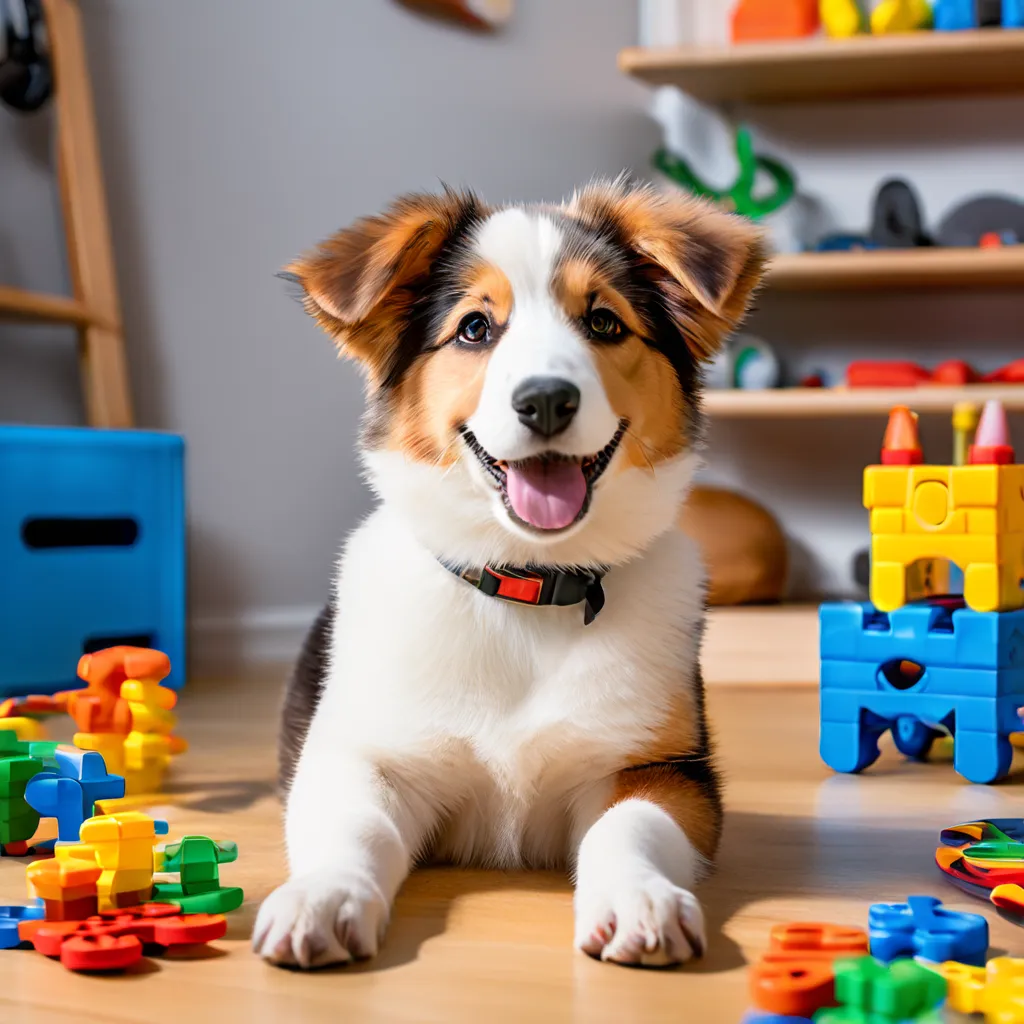Introduction
Are you a dog owner or enthusiast who’s ever wondered what’s the hardest dog to train? With over 340 recognized breeds, each with its unique characteristics, temperament, and behavior, it’s no surprise that some dogs can be more challenging to train than others. From the stubborn and independent to the intelligent and strong-willed, some breeds require more patience, persistence, and creative training approaches.
In this article, we’ll delve into the world of dog training and explore the factors that make some breeds more difficult to train than others. We’ll examine the role of characteristics, temperament, and behavior in trainability, as well as breed-specific traits and genetics that can impact a dog’s ability to learn and respond to commands. Whether you’re a seasoned dog owner or a newcomer to the world of canine companionship, this article aims to provide valuable insights and practical tips on how to work with even the most challenging breeds.
So, what’s the hardest dog to train? While it’s difficult to pinpoint a single breed, some dogs are notoriously more stubborn and independent than others. Breeds like the Beagle, Siberian Husky, Malamute, Jack Russell Terrier, and Basenji are often cited as being among the most challenging to train. But don’t worry – with the right approach, patience, and persistence, even the most difficult breeds can learn and thrive.
What Makes a Dog Breed Hard to Train?
When it comes to training a dog, some breeds are naturally more challenging than others. But what makes a dog breed hard to train? The answer lies in a combination of factors, including characteristics, temperament, behavior, and genetics.
Breed Characteristics
Some dog breeds are bred for specific purposes, such as herding, hunting, or guarding. These breeds often have strong instincts and independent personalities, making them more difficult to train. For example, herding breeds like Border Collies and Australian Shepherds are highly intelligent and energetic, but they can be stubborn and resistant to training if not properly socialized and exercised.
Temperament and Behavior
A dog’s temperament and behavior also play a significant role in trainability. Breeds with high anxiety or fear-based behaviors, such as Chihuahuas and Poodles, may be more challenging to train due to their emotional sensitivity. On the other hand, breeds with calm and even temperaments, such as Labradors and Golden Retrievers, tend to be more receptive to training.
Genetics and Breed History
A dog’s genetic makeup and breed history can also impact trainability. Breeds that were developed for specific tasks, such as hunting or herding, may have inherited traits that make them more resistant to training. For example, breeds like Dachshunds and Shiba Inus were bred for independent hunting and may be more stubborn and difficult to train.
Understanding and Working with Challenging Breeds
While some dog breeds may be more challenging to train, it’s essential to remember that every dog is an individual. With patience, persistence, and positive reinforcement training, even the most stubborn breeds can learn and thrive. By understanding a breed’s characteristics, temperament, and behavior, owners can tailor their training approach to meet their dog’s unique needs and abilities.
The Role of Characteristics, Temperament, and Behavior in Trainability
When it comes to trainability, a dog’s characteristics, temperament, and behavior play a significant role. Breed-specific traits, genetics, and individual personalities all contribute to a dog’s ability to learn and respond to training.
Genetic Predispositions
Research has shown that certain breeds are more prone to specific behaviors, including trainability. For example, some breeds are naturally more eager to please and quick to learn, while others may be more independent and stubborn. Understanding a breed’s genetic predispositions can help trainers tailor their approach to meet the dog’s unique needs.
Temperament and Trainability
A dog’s temperament also plays a significant role in trainability. Dogs with a more even temperament, such as those that are calm and composed, tend to be easier to train than those with a more anxious or energetic temperament. Additionally, dogs that are more food-motivated or eager to please tend to respond better to positive reinforcement training methods.
Behavioral Traits and Trainability
A dog’s behavioral traits, such as energy level, focus, and attention span, also impact trainability. Dogs with high energy levels may require more exercise and mental stimulation to focus during training, while those with shorter attention spans may require shorter, more frequent training sessions.
Breed-Specific Characteristics and Trainability
Different breeds have unique characteristics that can affect trainability. For example, herding breeds tend to be highly intelligent and responsive to training, while hound breeds may be more independent and stubborn. Understanding a breed’s specific characteristics can help trainers develop effective training strategies.
Conclusion
In conclusion, a dog’s characteristics, temperament, and behavior all play a crucial role in trainability. By understanding a breed’s genetic predispositions, temperament, and behavioral traits, trainers can develop effective training strategies that meet the dog’s unique needs and maximize their potential.
Breed-Specific Traits and Genetics: Impact on Trainability
When it comes to dog training, breed-specific traits and genetics play a significant role in determining a dog’s trainability. While environment and training methods are crucial, a dog’s genetic makeup can influence its ability to learn and respond to commands.
Genetic Influence on Trainability
Research has shown that certain breeds are more trainable than others due to their genetic predispositions. For instance, breeds like Golden Retrievers and German Shepherds are known for their high trainability, while breeds like Bulldogs and Pugs may be more challenging to train. This is because these breeds have been selectively bred for specific traits, such as intelligence, energy level, and temperament, which affect their ability to learn and respond to training.
Breed-Specific Traits and Trainability
Different breeds have unique characteristics that can impact their trainability. For example:
- Herding breeds, such as Border Collies and Australian Shepherds, are highly trainable due to their high energy levels and strong work ethic.
- Hunting breeds, such as Pointers and Retrievers, are bred for their strong prey drive and ability to follow commands, making them highly trainable.
- Companion breeds, such as Cavalier King Charles Spaniels and Bichon Frise, are often more challenging to train due to their independent nature and low energy levels.
The Role of Genetics in Shaping Behavior
Genetics play a significant role in shaping a dog’s behavior, including its trainability. Studies have shown that certain genetic markers are associated with specific behavioral traits, such as aggression, anxiety, and trainability. For example, a study found that certain breeds, such as German Shepherds and Rottweilers, are more likely to exhibit aggressive behavior due to their genetic makeup.
Implications for Dog Training
Understanding the impact of breed-specific traits and genetics on trainability is crucial for effective dog training. By recognizing a dog’s genetic strengths and weaknesses, trainers can tailor their training methods to meet the dog’s individual needs. For example, a trainer working with a high-energy breed like an Australian Shepherd may need to incorporate more physical activity and mental stimulation into the training program.

In conclusion, breed-specific traits and genetics have a significant impact on a dog’s trainability. By understanding the genetic influences on behavior and trainability, trainers can develop more effective training programs that cater to a dog’s individual needs.
Understanding and Working with Independent and Stubborn Breeds
Independent and stubborn breeds can be challenging to work with, but with the right approach, they can also be incredibly rewarding. These breeds were originally developed to work independently, without human direction, and are often used for hunting, herding, and guarding.
Characteristics of Independent Breeds
Independent breeds are known for their self-reliant nature and ability to think and act on their own. They are often described as aloof, reserved, and strong-willed, which can make training a challenge. However, with consistency, patience, and positive reinforcement, independent breeds can learn to trust and respond to their owners.
Some common characteristics of independent breeds include:
- Aloofness and independence
- Strong will and stubbornness
- High energy and exercise needs
- Low maintenance and grooming needs
- Intelligence and problem-solving abilities
Popular Independent Breeds
Some popular independent breeds include:
- Chow Chow: Known for their fluffy coats and independent personalities, Chow Chows are low-energy dogs that do well with short daily walks. However, proper training and socialization from an early age are required to prevent potential behavior issues.
- Shar-Pei: This breed is known for its strong-willed nature and can be quite independent, making training a challenge without consistent, firm guidance.
- Fox Terrier: This breed is energetic and independent, requiring regular exercise and mental stimulation to prevent boredom and destructive behavior.
- Saluki: One of the oldest dog breeds, Salukis are known for their independence and aloof demeanor. They have a strong prey drive and are used for hunting in many parts of the world.
Working with Independent Breeds
Working with independent breeds requires a different approach than working with more social breeds. Here are some tips for working with independent breeds:
- Establish clear boundaries and rules
- Use positive reinforcement training methods
- Provide regular exercise and mental stimulation
- Be patient and consistent
- Respect their independence and personal space
By understanding and respecting the characteristics of independent breeds, you can build a strong and rewarding relationship with your dog.

Can Any Dog Breed Be Trained with Patience and Persistence?
The short answer is yes, any dog breed can be trained with patience and persistence. While some breeds may be more challenging to train than others, it’s essential to remember that every dog is an individual and can learn with the right approach.
Training a dog requires a combination of effective communication, consistency, and positive reinforcement. It’s crucial to understand that dogs, like humans, have different personalities, temperaments, and learning styles. What works for one dog may not work for another.
Patience and persistence are key elements in dog training. Dogs thrive on routine and clear boundaries, and they need time to learn and absorb new information. With a calm, gentle, and consistent approach, you can build trust and rapport with your dog, making the training process more enjoyable and effective.
It’s also important to recognize that some breeds may require more time, effort, and creativity to train due to their independent nature or strong prey drive. However, with the right training techniques, socialization, and positive reinforcement, even the most challenging breeds can learn to obey commands and behave well.
In conclusion, while some dog breeds may be more difficult to train than others, patience and persistence can overcome any obstacle. By understanding your dog’s unique needs, personality, and learning style, you can develop a training plan that works best for them, leading to a stronger bond and a more enjoyable training experience.
Conclusion
In conclusion, determining the hardest dog to train is a complex task that depends on various factors, including breed-specific traits, genetics, temperament, and behavior. While some breeds may be more challenging to train than others, it’s essential to remember that every dog is an individual and can be trained with patience, persistence, and the right approach.
As we’ve discussed throughout this article, understanding the role of characteristics, temperament, and behavior in trainability is crucial for developing effective training strategies. Additionally, recognizing breed-specific traits and genetics can help you tailor your training approach to meet the unique needs of your dog.
Ultimately, the key to successful dog training lies in building a strong bond with your dog, based on trust, respect, and clear communication. By doing so, you can overcome even the most challenging training obstacles and develop a well-behaved, loyal companion.
So, what’s the hardest dog to train? The answer is not a specific breed, but rather a dog that lacks proper training, socialization, and care. By providing your dog with the necessary attention, training, and love, you can overcome any training challenge and enjoy a rewarding relationship with your furry friend.

















